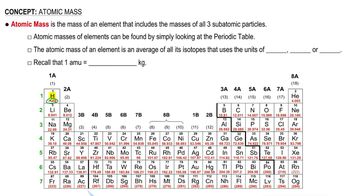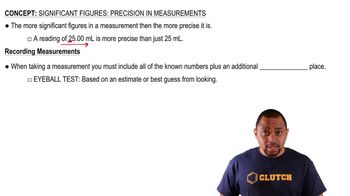Here are the essential concepts you must grasp in order to answer the question correctly.
Molecular Mass
Molecular mass is the sum of the atomic masses of all atoms in a molecule, typically measured in atomic mass units (amu). Accurate determination of molecular mass is crucial for identifying the chemical formula of a compound, as it provides insight into the composition and structure of the molecule. High precision in these measurements ensures that the calculated molecular mass reflects the true identity of the substance.
Recommended video:
Precision vs. Accuracy
Precision refers to the consistency of repeated measurements, while accuracy indicates how close a measurement is to the true value. In molecular mass measurement, high precision ensures that repeated measurements yield similar results, while high accuracy confirms that those results are close to the actual molecular mass. Both are essential for reliable identification of molecular formulas, as discrepancies can lead to incorrect conclusions about a compound's identity.
Recommended video:
Significant Figures Precision
Empirical and Molecular Formulas
The empirical formula represents the simplest whole-number ratio of elements in a compound, while the molecular formula indicates the actual number of atoms of each element in a molecule. Accurate molecular mass measurements are necessary to distinguish between these formulas, especially when compounds have similar empirical formulas but different molecular masses. This distinction is vital for understanding the chemical behavior and properties of synthesized molecules.
Recommended video:
Empirical vs Molecular Formula




